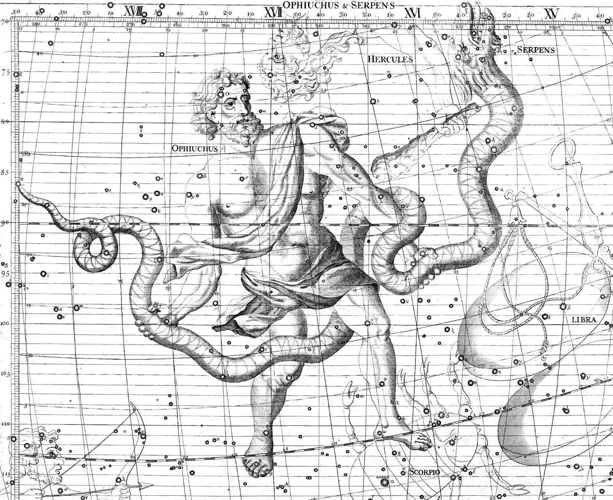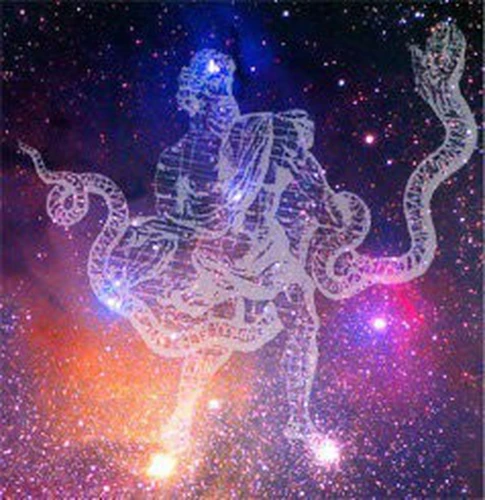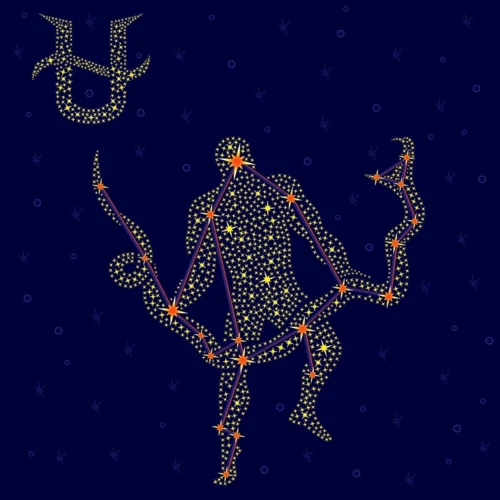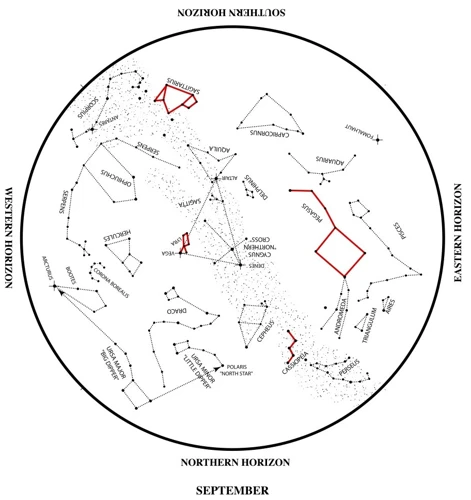Astrology has fascinated humans for centuries, offering insights into our personalities, relationships, and life events. With a multitude of astrological systems around the world, each with its unique methods and interpretations, it can be overwhelming to navigate through the different approaches. From the widely-known Western Astrology, which focuses on the zodiac signs and houses, to the ancient Vedic Astrology, which emphasizes the nakshatras and doshas, and even the intriguing Chinese Astrology, with its zodiac animals and elements, there is so much to explore. In this article, we will delve into these astrological systems and more, uncovering their origins, key features, and how they are interpreted. So, grab your celestial map and join us on this cosmic journey of self-discovery and understanding.
Contents
- Western Astrology
- Vedic Astrology
- Chinese Astrology
- Other Astrological Systems
- Comparative Analysis
- Conclusion
- Frequently Asked Questions
- References
-
Frequently Asked Questions
- FAQs about Exploring the Different Astrological Systems
- 1. How do Western astrology and Vedic astrology differ?
- 2. What are the origins of Chinese astrology?
- 3. How does Chinese astrology determine a person’s animal sign?
- 4. What are nakshatras in Vedic astrology?
- 5. How does sidereal astrology differ from other astrological systems?
- 6. What is the significance of doshas in Vedic astrology?
- 7. How does Celtic astrology differ from Western astrology?
- 8. What is Mayan astrology?
- 9. How do the different astrological systems approach interpretation?
- 10. How popular are these different astrological systems today?
- References
- Read More
Western Astrology

Western Astrology is one of the most widely recognized astrological systems, originating from ancient Greek and Babylonian traditions. This system is based on the concept that the positions of celestial bodies at the time of a person’s birth can provide valuable insights into their personality traits and life events. In Western Astrology, the zodiac signs play a central role, representing different personality characteristics and traits. These twelve signs are associated with specific dates of the year and are further divided into houses, which represent different areas of life such as relationships, career, and spirituality. Each person also has a rising sign, or ascendant, which determines how they present themselves to the world. Western Astrology offers a fascinating framework for understanding oneself and others, delving into compatibility between different signs and exploring the impact of comets, asteroids, and meteor showers in our lives (/role-comets-asteroids-meteor-showers/). While some skeptics question the predictive powers of astrology, there is an undeniable allure to exploring the science and art behind horoscope predictions (/science-behind-horoscope-predictions/). Understanding the intricacies of Western Astrology provides a deeper understanding of ourselves and the world around us.
Origins and Basics
– Western Astrology: Western Astrology has its origins in ancient Greek and Babylonian civilizations. The Greeks were influenced by the celestial observations and astrological practices of the Babylonians, ultimately merging them with their own cultural beliefs. The system was further refined during the Hellenistic period, with prominent figures like Ptolemy contributing to its development. Today, Western Astrology is deeply rooted in the understanding of the relationship between the Earth and the Sun, as well as the movements of other celestial bodies.
– Vedic Astrology: Vedic Astrology, also known as Jyotish, finds its origins in ancient India. It is believed to have been recorded in the sacred texts known as the Vedas. Vedic Astrology encompasses not only the study of the zodiac signs and their placements but also takes into account the concept of karma and the influence of past lives on the present. The Vedic system places great importance on accurate calculation and observation of the positions of celestial bodies.
– Chinese Astrology: Chinese Astrology has a long history, dating back to ancient China. It is heavily influenced by the philosophical concepts of Taoism and Confucianism. The Chinese Zodiac, known as Shengxiao, is a central aspect of Chinese Astrology and is based on a cycle of twelve animal signs, each representing a different year in the lunar calendar. Chinese Astrology also incorporates the elements of wood, fire, earth, metal, and water, which interact with the zodiac animals to create a more nuanced understanding of personalities and compatibility.
– Other Astrological Systems: There are many other astrological systems that have their own unique origins and basics. Mayan Astrology, for example, draws upon the traditions of the ancient Mayans and their complex calendar system. Celtic Astrology is rooted in the Celtic culture of ancient Europe, with its own set of zodiac symbols and interpretations. Sidereal Astrology diverges from the Western system by considering the actual positions of the stars in the sky rather than relying solely on the tropical zodiac. Each astrological system offers its own perspective on how the celestial bodies and their movements influence human life (/rising-signs-compatibility/). Understanding the origins and basics of these systems allows us to appreciate the cultural and philosophical influences that have shaped astrology throughout history.
Key Features
Key Features of Western Astrology
The key features of Western Astrology make it a fascinating and vibrant system for understanding personality traits and predicting future events. Here are some of its notable characteristics:
1. Zodiac Signs: The zodiac signs form the foundation of Western Astrology. There are twelve signs, each associated with specific dates and representing distinct personality traits and qualities. These signs include Aries, Taurus, Gemini, Cancer, Leo, Virgo, Libra, Scorpio, Sagittarius, Capricorn, Aquarius, and Pisces. Individuals born under each sign exhibit unique characteristics influenced by the specific element (fire, earth, air, or water) associated with their sign.
2. Houses: Western Astrology divides the sky into twelve houses, each representing different areas of life. The houses provide insight into various aspects, including personal identity, relationships, career, home, and spirituality. By interpreting the placement of celestial bodies within these houses during a person’s birth, astrologers can gain deeper understanding of the influences on specific areas of an individual’s life.
3. Rising Sign: The rising sign, also known as the ascendant, plays a crucial role in Western Astrology. It represents the sign that was rising on the eastern horizon at the time of a person’s birth. The rising sign influences how an individual presents themselves to the world, their appearance, and their outward behavior. It often has a significant impact on an individual’s first impression and initial interactions with others.
4. Planetary Influence: Western Astrology places great emphasis on the influence of planets in determining a person’s personality and life events. Each planet is associated with specific qualities and energies that shape an individual’s character. For example, Mercury is connected to communication and intellect, Venus represents love and beauty, and Mars symbolizes energy and action. The interactions and alignments between planets are analyzed to gain insights into various aspects of life, such as relationships, career, and personal growth.
5. Compatibility: Western Astrology also explores compatibility between individuals based on their zodiac signs. Certain signs are believed to be more compatible with each other, while others may have more challenging or conflicting dynamics. This aspect of Western Astrology is often used to understand relationship dynamics and compatibility in love, friendship, and partnerships.
By understanding these key features, individuals can delve deeper into the intriguing world of Western Astrology, gaining valuable insights into their own personalities, relationships, and life paths. Whether used as a tool for self-reflection or as a guide for future planning, Western Astrology offers a unique and compelling lens through which to view the human experience.
Zodiac Signs and Houses
Zodiac signs and houses are integral components of Western Astrology, offering valuable insights into a person’s personality and the various areas of their life. The zodiac signs are twelve distinct divisions of the celestial belt, each representing specific personality characteristics and traits. These signs include Aries, Taurus, Gemini, Cancer, Leo, Virgo, Libra, Scorpio, Sagittarius, Capricorn, Aquarius, and Pisces. Each sign is associated with a particular element (fire, earth, air, or water) and is ruled by a corresponding planet, which further influences the sign’s energy. Understanding your zodiac sign provides a foundation for self-awareness and personal growth. Additionally, Western Astrology uses the concept of houses to divide the birth chart into twelve sections that represent different areas of life. Each house signifies specific aspects of life, such as relationships, career, family, and spirituality. The interpretation of the zodiac signs and houses in a birth chart provides valuable insights into an individual’s strengths, weaknesses, desires, and challenges. Exploring the intricate relationships between the signs and houses can help individuals navigate various aspects of their lives and make informed decisions. Whether seeking answers about love and relationships (/rising-signs-compatibility/), career path, or personal development, delving into the depths of zodiac signs and houses is a fascinating journey of self-discovery.
Vedic Astrology

Vedic Astrology, also known as Jyotish, is an ancient astrological system that originated in India thousands of years ago. Rooted in the belief that celestial bodies and their movements influence human life, Vedic Astrology provides a comprehensive framework for understanding one’s destiny and making informed decisions. The foundation of Vedic Astrology lies in the concept of “Nakshatras,” which are lunar constellations that divide the zodiac into twenty-seven equal parts. These Nakshatras are associated with specific qualities, which provide insights into a person’s personality, strengths, and challenges. Additionally, Vedic Astrology places great importance on the concept of “Doshas,” which represent imbalances in the elemental energies within an individual’s birth chart. By identifying these imbalances, Vedic Astrology offers remedies and guidance to restore harmony and promote well-being. With its rich symbolism and deep spiritual roots, Vedic Astrology continues to be widely practiced in India and has gained popularity around the world, providing individuals with a profound understanding of their life’s path and purpose.
Origins and Basics
Western Astrology has ancient origins that can be traced back to the Babylonian civilization around 2000 BCE. It later merged with Greek astrology, which introduced the concept of zodiac signs. The Babylonians were keen observers of the night sky and believed that the movement of celestial bodies held significance for human affairs. This belief system formed the foundation for Western Astrology. The Greeks further developed the astrological system by attributing specific personality traits and characteristics to each zodiac sign. They believed that the alignment of the planets at the time of a person’s birth influenced their destiny and provided insights into their future. Western Astrology operates on the premise that the zodiac is divided into twelve equal sections, each representing 30 degrees of the celestial sphere. These sections are associated with the twelve zodiac signs, namely Aries, Taurus, Gemini, Cancer, Leo, Virgo, Libra, Scorpio, Sagittarius, Capricorn, Aquarius, and Pisces. Each sign is associated with specific elements (fire, earth, air, or water) and qualities (cardinal, fixed, or mutable), which further influence personality traits. The basics of Western Astrology also include the concept of the horoscope, which is an astrological chart that maps the positions of the planets at the time of a person’s birth. This chart provides invaluable information about an individual’s personality, life events, relationships, and career path.
Key Features
In Western Astrology, there are several key features that distinguish it from other astrological systems. One important feature is the use of the zodiac signs as a foundation for understanding personality traits and characteristics. The zodiac signs, including Aries, Taurus, Gemini, and so on, are associated with specific dates in the year and represent different archetypal energies. These signs have distinct qualities and symbolism, allowing astrologers to interpret and understand individual behavior patterns. Additionally, Western Astrology utilizes the concept of houses, which are specific areas of life represented in the birth chart. Each house corresponds to different aspects of life, such as relationships, career, and spirituality. The house placement of planets and other astrological factors provides deeper insights into a person’s experiences and challenges in these areas. Another significant feature in Western Astrology is the rising sign, also known as the ascendant. This sign represents the mask or persona that an individual presents to the world, influencing their outward appearance and behavior. The rising sign is determined by the exact time and location of a person’s birth, and it adds another layer of complexity to the birth chart interpretation. These key features of Western Astrology enable astrologers to gain a comprehensive understanding of an individual’s personality, life events, and potential paths for growth.
Nakshatras and Doshas
In Vedic Astrology, the concepts of Nakshatras and Doshas are fundamental to understanding one’s birth chart and predicting various aspects of life. Nakshatras refer to the lunar mansions or specific areas of the sky that the Moon passes through during its monthly cycle. There are a total of 27 Nakshatras, each with its unique qualities and symbolism. These Nakshatras are believed to influence an individual’s personality traits, behaviors, and life events.
Vedic Astrology also places great importance on Doshas, which are specific planetary combinations that can create imbalances or challenges in a person’s life. There are three primary Doshas: Vata, Pitta, and Kapha. These Doshas are associated with the elements of air, fire, and earth respectively. Each Dosha has its own characteristics and imbalances that can affect an individual’s physical, mental, and emotional well-being.
To understand the influence of Nakshatras and Doshas on an individual, Vedic Astrologers analyze their birth chart, also known as the Janam Kundali. The birth chart is a map of the planets’ positions at the time of birth and provides deep insights into an individual’s life path, strengths, and challenges. By studying the Nakshatras and analyzing the Doshas present in the birth chart, Vedic Astrologers can make predictions and offer guidance on various aspects of life, such as career, relationships, and health.
It is important to note that the Vedic Astrological system emphasizes the importance of remedies and mitigating the negative effects of Doshas. These remedies can include specific rituals, gemstone recommendations, and lifestyle adjustments to help restore balance and harmony in one’s life. Consulting a Vedic Astrologer skilled in interpreting Nakshatras and Doshas can provide valuable insights and guidance for navigating life’s challenges and maximizing one’s potential.
Chinese Astrology

Chinese Astrology, with its rich historical roots, offers a unique perspective on astrology. Unlike Western Astrology, which is based on the positions of the sun, Chinese Astrology focuses on the lunar calendar and incorporates a twelve-year animal zodiac cycle. Each year is associated with a specific zodiac animal, including the Rat, Ox, Tiger, Rabbit, Dragon, Snake, Horse, Sheep, Monkey, Rooster, Dog, and Pig. These animals bring their own distinct characteristics and traits, shaping the personality traits and destiny of individuals born in their respective years. Additionally, Chinese Astrology incorporates the concept of elements, including Wood, Fire, Earth, Metal, and Water, which further influence personality traits and compatibility between signs. With its complex system of animal zodiacs and elements, Chinese Astrology offers a fascinating lens through which to understand ourselves and the world around us. Whether you’re curious about your own zodiac animal and element, or eager to explore compatibility with others, Chinese Astrology provides a captivating framework for self-discovery and interpersonal dynamics.
Origins and Basics
The origins of Western Astrology can be traced back to ancient civilizations such as ancient Greece and Babylon. These cultures observed the movements of celestial bodies and recognized that they had a profound impact on human affairs. Basic principles of Western Astrology include the belief that the positioning of planets and stars at the time of a person’s birth can influence their personality traits and life events. Astrologers use birth charts, also known as horoscopes, as a tool to analyze and interpret these influences. The birth chart is a map of the sky at the moment of birth, displaying the positions of the Sun, Moon, planets, and other celestial bodies. The chart is based on the zodiac, which is divided into twelve equal sections called “houses”. Each house represents a different area of life, such as career, relationships, or health. The zodiac is composed of twelve signs, each associated with specific qualities and characteristics. These signs are based on the apparent path of the Sun throughout the year. The introduction of the rising sign, or ascendant, adds another layer to the birth chart. The rising sign represents the personality traits a person exhibits in their outward appearance and how they interact with the world. By exploring the origins and basics of Western Astrology, we can begin to unlock the mysteries of the stars and gain a deeper understanding of ourselves and the cosmic forces that shape our lives.
Key Features
Key Features of Western Astrology:
1. Zodiac Signs: In Western Astrology, the zodiac signs play a pivotal role. These twelve signs, including Aries, Taurus, Gemini, and so on, each have their unique characteristics and qualities. The signs are associated with specific dates of the year and are believed to influence an individual’s personality traits and behaviors.
2. Birth Chart: A birth chart, also known as a natal chart, is a key feature of Western Astrology. It is a snapshot of the positions of celestial bodies at the exact time of an individual’s birth. The birth chart provides valuable insights into an individual’s personality, strengths, weaknesses, and potential life events.
3. Houses: Western Astrology divides the birth chart into twelve houses, each representing different aspects of life, such as relationships, career, health, and spirituality. The houses reveal where specific energies and influences are concentrated in a person’s life, helping astrologers interpret and predict various life experiences and events.
4. Aspects: Aspects refer to the angles formed between celestial bodies in the birth chart. These angles indicate how different planets interact with each other and influence an individual’s personality and experiences. Major aspects, such as conjunctions, oppositions, trines, and squares, provide additional layers of interpretation in Western Astrology.
5. Transits: Transits are an essential aspect of Western Astrology that involves analyzing the current positions of celestial bodies relative to an individual’s birth chart. Transits can provide insights into potential opportunities, challenges, and significant life events. Astrologers often use transits to make predictions and guide individuals in making informed decisions.
Understanding these key features of Western Astrology allows individuals to delve into the fascinating world of astrology and gain deeper insights into their own personalities, relationships, and life journeys. Whether exploring compatibility between zodiac signs or examining the significance of specific aspects and transits, Western Astrology provides a comprehensive framework for self-discovery and growth.
Zodiac Animals and Elements
In Chinese Astrology, the concept of Zodiac Animals and Elements takes center stage. Instead of zodiac signs based on months, Chinese astrology utilizes a 12-year cycle represented by animal symbols. Each animal corresponds to a specific year, creating a unique personality profile for individuals born in that year. The 12 animals of the Chinese zodiac include the Rat, Ox, Tiger, Rabbit, Dragon, Snake, Horse, Sheep, Monkey, Rooster, Dog, and Pig. These animal symbols are believed to reflect certain qualities, characteristics, and tendencies associated with individuals born in their respective years. Additionally, Chinese astrology incorporates the Five Elements: Wood, Fire, Earth, Metal, and Water, which further influence the personality traits and destiny of individuals. The combination of the animal and element assigned to a person’s birth year provides a more nuanced understanding of their character. For example, someone born in the Year of the Rat may possess resourcefulness and intelligence while being influenced by the Water element, which signifies adaptability and intuition. In Chinese Astrology, the interplay between Zodiac Animals and Elements creates a rich tapestry of personal attributes and outlooks, offering a fascinating lens through which to explore individuality and compatibility.
Other Astrological Systems

In addition to Western Astrology, there are several other astrological systems that offer unique perspectives and insights. One such system is Mayan Astrology, which originated from the ancient Mayan civilization. It places a strong emphasis on cycles and rhythms, with each day having its own specific energy and meaning. Celtic Astrology, on the other hand, draws its roots from the ancient Celtic culture. It is based on the lunar calendar and incorporates symbolism from nature, such as trees and animals, to provide guidance and understanding. Another intriguing system is Sidereal Astrology, which takes into account the actual positions of the stars and constellations in the sky. It differs from Western Astrology, as it considers the precession of the equinoxes and adjusts the zodiac accordingly. Exploring these other astrological systems gives us a broader perspective on how different cultures and civilizations have interpreted the cosmos and its influence on our lives.
Mayan Astrology
Mayan Astrology is a unique astrological system that originated from the ancient Mayan civilization in Mesoamerica. The Mayans had a deep reverence for the celestial bodies and believed that they held immense power and influence over human lives. In Mayan Astrology, the calendar played a vital role, and it was intricately connected to the cycles of the sun, moon, and planets. The Mayan calendar is known for its precision and accuracy in tracking time, and it consists of multiple calendars, each with its specific purpose.
One of the prominent aspects of Mayan Astrology is the Tzolk’in, or the Sacred Round calendar, which consists of 260 days. This calendar is a combination of 20 different day signs and 13 numbers, creating a unique energy for each day. These day signs and numbers are believed to determine an individual’s personality traits, strengths, and weaknesses. In addition to the Tzolk’in calendar, the Mayans also used the Haab calendar, which is a 365-day calendar based on the solar cycle.
Mayan Astrology also emphasizes the significance of animal totems. Each person is associated with an animal sign based on their birthdate. These animal signs, such as the jaguar, eagle, or monkey, are believed to reflect certain qualities and attributes that influence an individual’s character and destiny.
In interpreting Mayan Astrology, it is essential to consider the interplay between the day signs, numbers, and animal totems. The combination of these elements provides a unique and detailed understanding of an individual’s personality, strengths, weaknesses, and life path.
Unlike some other astrological systems, Mayan Astrology is deeply rooted in the Mayan culture and beliefs. It offers a fascinating perspective on the connection between humans and the celestial realm, providing guidance and insight into one’s life purpose and destiny. Exploring Mayan Astrology can be an enriching experience, shedding light on the intriguing mysteries of this ancient civilization and its approach to astrology.
Celtic Astrology
Celtic Astrology is a fascinating astrological system that draws inspiration from the ancient Celtic culture and beliefs. Unlike Western Astrology, which focuses on the movement of celestial bodies, Celtic Astrology derives its interpretations from the cycles of nature and the spiritual connection between humans and the natural world. Instead of zodiac signs, the Celtic Astrology system features a tree calendar, where each tree corresponds to a different time of the year and has its own symbolic meanings and characteristics. For example, the Birch tree represents new beginnings and fresh starts, while the Oak tree signifies strength and resilience. Celtic Astrology also associates certain animals with specific traits and virtues. Each person is assigned an animal sign based on their birth date, which can reveal insights into their personality and life path. The Celtic Astrology system is deeply rooted in the Celtic culture and its connection to nature, making it a unique and meaningful approach to understanding ourselves and our place in the world.
Sidereal Astrology
Sidereal Astrology is an astrological system that diverges from the commonly known Western Astrology in its approach. Instead of using the tropical zodiac that is based on the position of the Sun, Sidereal Astrology focuses on the position of the fixed stars and constellations. The word “sidereal” refers to the stars, and this system examines the influence of these celestial bodies on an individual’s personality and life events. In Sidereal Astrology, the zodiac is divided into 12 equal sections, each corresponding to a specific constellation. This means that your zodiac sign in Sidereal Astrology might differ from the one in Western Astrology. Sidereal Astrology also takes into account the precession of the equinoxes, which is the gradual shift in the Earth’s axis over time. This system believes that the influence of the stars and constellations is more accurate in predicting events and describing a person’s character. While relatively less popular than Western or Vedic Astrology, Sidereal Astrology has its dedicated followers who appreciate its unique perspective and believe in its accuracy. This alternative approach to astrology offers a fresh perspective for those seeking a different lens through which to understand themselves and their place in the cosmos.
Comparative Analysis

Comparative Analysis allows us to examine and contrast different astrological systems, shedding light on their similarities and differences. When comparing Western Astrology, Vedic Astrology, and Chinese Astrology, we find that while they all share the common thread of studying celestial bodies and their influence on human life, they diverge in various aspects. One noticeable difference lies in their origins and cultural contexts—the Western system is rooted in ancient Greek and Babylonian traditions, Vedic Astrology has deep roots in Indian culture and spirituality, and Chinese Astrology emerged from ancient Chinese philosophies. Additionally, they vary in their astronomical references, with Western Astrology focusing on the zodiac signs and houses, Vedic Astrology emphasizing the nakshatras and doshas, and Chinese Astrology revolving around the zodiac animals and elements. Another intriguing difference is in their approaches to interpretation—Western Astrology is known for its psychological profiling and emphasis on individualism, while Vedic Astrology incorporates karmic patterns and connections to past lives, and Chinese Astrology reflects a holistic approach deeply intertwined with Chinese philosophy. Comparative analysis not only helps us appreciate the diversity and richness of astrological systems, but it also provides us with a more comprehensive understanding of astrology’s uses and popularity across different cultures and societies.
Similarities and Differences
When comparing the different astrological systems, it becomes evident that there are both similarities and differences in their approaches and interpretations. Here, we will explore some key points of comparison:
1. Astrological Components:
– Western Astrology primarily focuses on the zodiac signs, houses, and aspects between planets.
– Vedic Astrology places significant emphasis on nakshatras (lunar mansions) and doshas (astrological imbalances).
– Chinese Astrology centers around zodiac animals and elements.
2. Philosophical Background:
– Western Astrology is influenced by Greek and Babylonian traditions, focusing on individualism and self-expression.
– Vedic Astrology is deeply rooted in Hinduism and emphasizes karma, reincarnation, and spiritual growth.
– Chinese Astrology draws from Taoism and Confucianism, highlighting harmony, balance, and collective well-being.
3. Calculation Systems:
– Western Astrology employs the tropical zodiac, based on the Earth’s relationship with the Sun.
– Vedic Astrology uses the sidereal zodiac, adjusting for the precession of the equinoxes.
– Chinese Astrology utilizes the lunisolar calendar based on the positions of the Sun and Moon.
4. Interpretation Techniques:
– Western Astrology often employs psychological and archetypal frameworks to interpret charts.
– Vedic Astrology involves detailed analysis of charts, using yogas (planetary combinations) and dasas (planetary periods) for predictions.
– Chinese Astrology focuses on the five elements and the interactions between yin and yang energies.
5. Cultural Influences:
– Western Astrology has gained widespread popularity in Western cultures and has influenced mainstream media and entertainment.
– Vedic Astrology is deeply ingrained in Indian culture and continues to play a significant role in daily life and decision-making.
– Chinese Astrology is deeply integrated into Chinese culture, particularly during important events like New Year celebrations.
While these are just a few examples, they highlight the rich tapestry of similarities and differences among astrological systems, allowing individuals to explore various perspectives and enrich their understanding of themselves and the world around them.
Approaches to Interpretation
When it comes to the interpretation of astrological systems, there are various approaches that practitioners use to decipher the meanings behind the celestial configurations. Let’s explore some of the different approaches to interpretation:
1. Traditional Interpretation: This approach relies on established astrological principles and guidelines that have been passed down through generations. It involves analyzing the positions of planets, aspects between them, and their influence on different areas of life. Traditional interpretation often refers to classical texts and techniques to make predictions and provide guidance.
2. Psychological Interpretation: This approach focuses on the psychological and emotional aspects of astrology. It delves into the symbolism behind the placements of celestial bodies and examines how these placements may reflect an individual’s inner world, motivations, and challenges. Psychological astrology seeks to provide insights into personal growth, self-awareness, and understanding.
3. Evolutionary Interpretation: This approach considers astrology as a tool for personal and spiritual evolution. It looks at the birth chart as a reflection of an individual’s soul journey and past-life experiences. Evolutionary astrologers examine karmic patterns, life lessons, and potential growth opportunities based on the placements of planets and their relationships. They believe that astrology can provide guidance for individuals to fulfill their soul’s purpose.
4. Predictive Interpretation: As the name suggests, this approach focuses on using astrology to make predictions about future events and outcomes. It involves analyzing transits (the current positions of planets in relation to the birth chart) and progressions (the ongoing development of the birth chart over time) to anticipate potential trends and significant life events.
5. Holistic Interpretation: This approach combines different astrological techniques and approaches, integrating various perspectives to gain a comprehensive understanding. Holistic astrologers consider multiple factors, such as the birth chart, transits, and the individual’s unique circumstances, to provide a broad and nuanced interpretation that addresses different facets of life.
Each approach to interpretation brings its own insights and perspectives to astrology, allowing practitioners and enthusiasts to explore the depths of cosmic symbolism and its impact on human experience. Whether one seeks psychological self-reflection, spiritual guidance, or predictive insights, these different approaches offer a rich and multidimensional understanding of astrology’s profound influence on our lives.
Uses and Popularity
Astrology has been utilized for a wide range of purposes throughout history and continues to be popular today. Here are some of the main uses and the reasons behind the enduring popularity of astrological systems:
1. Self-Reflection and Personal Growth: One of the primary uses of astrology is for self-reflection and personal growth. By examining our birth charts and understanding the various astrological influences, we can gain valuable insights into our strengths, weaknesses, and life patterns. Astrology provides a framework for self-awareness and empowers individuals to make conscious choices for personal development.
2. Compatibility and Relationships: Astrology is often consulted to assess compatibility between individuals and to gain insights into relationships. By analyzing the astrological charts of two people, astrologers can identify potential challenges as well as areas of harmony and compatibility. Understanding astrological dynamics in relationships can help individuals navigate conflicts, improve communication, and build stronger connections.
3. Career Guidance: Many individuals turn to astrology for career guidance and to gain insights into their professional lives. By examining the positioning of planets and houses in one’s birth chart, astrologers can provide guidance on suitable career paths, potential areas of success, and challenges to be aware of. Astrology can serve as a tool for making informed career choices and finding fulfillment in one’s work.
4. Timing and Decision-Making: Astrology is often used to determine favorable times for important events, such as starting a new business, getting married, or making major life decisions. Through techniques such as electional astrology and transits, astrologers can identify auspicious timings and potential challenges. By aligning actions with favorable astrological influences, individuals can enhance their chances of success and minimize potential difficulties.
5. Entertainment and Daily Horoscopes: Another reason for the enduring popularity of astrology is its entertainment value. Many people enjoy reading their daily horoscopes and exploring astrological forecasts for fun and amusement. While not scientifically proven, horoscopes can offer a sense of guidance and inspiration for the day ahead.
Astrology is used for self-reflection, relationship analysis, career guidance, timing decisions, and entertainment purposes. Its popularity stems from the desire for self-understanding, the quest for meaningful connections, and the fascination with the mysteries of the cosmos. Whether people view it as a science, a form of divination, or simply a source of inspiration, astrology continues to captivate and intrigue individuals around the world.
Conclusion

In conclusion, exploring the different astrological systems, including Western Astrology, Vedic Astrology, Chinese Astrology, and others, provides a rich tapestry of knowledge and understanding. Each system offers unique perspectives on the cosmos and how it influences our lives. While Western Astrology focuses on zodiac signs and houses, Vedic Astrology emphasizes nakshatras and doshas, and Chinese Astrology explores zodiac animals and elements. Additionally, other astrological systems such as Mayan Astrology, Celtic Astrology, and Sidereal Astrology further broaden our horizons. By comparing and contrasting these systems, we gain insights into the similarities and differences in their approaches to interpretation. From predictions about personality traits to forecasting future events and compatibility analysis (/rising-signs-compatibility/), astrology has captivated human imagination for centuries. Whether one sees astrology as a science, an art, or a belief system, there is no denying its enduring popularity. It continues to be a source of guidance, self-discovery, and connection with the celestial forces that surround us. So, whether you seek answers, validation, or simply a sense of wonder, astrology provides a fascinating lens through which to navigate your journey through life.
Frequently Asked Questions

FAQs about Astrological Systems
1. What is the difference between Western Astrology and Vedic Astrology?
Western Astrology is based on the tropical zodiac, considering the Earth’s relationship to the Sun, while Vedic Astrology is based on the sidereal zodiac, considering the Earth’s alignment with distant stars.
2. How does Chinese Astrology determine a person’s zodiac animal?
Chinese Astrology assigns zodiac animals based on the year of birth, following a twelve-year cycle that includes animals like the Rat, Ox, Tiger, and more.
3. What are Nakshatras in Vedic Astrology?
Nakshatras are lunar mansions in Vedic Astrology, dividing the zodiac into 27 equal parts. Each Nakshatra represents specific qualities and influences over different aspects of life.
4. How does Mayan Astrology differ from other systems?
Mayan Astrology, also known as the Tzolk’in, is based on a 260-day sacred calendar and focuses on the energy cycles associated with human characteristics and destiny.
5. Can astrology predict future events?
Astrology offers insights into potential situations and influences, but it is not an exact science for predicting specific events with absolute certainty.
6. How can astrology be useful in relationships?
Astrology provides understanding of compatibility and dynamics between individuals, highlighting strengths and challenges in a relationship and offering guidance for better communication and harmony.
7. Are there astrological systems specific to certain cultures or regions?
Yes, various cultures have their own systems, such as Celtic Astrology, which connects with the ancient Celtic calendar and nature divination, and Vedic Astrology, originating in ancient India.
8. Can astrology help with career choices?
Astrology can provide insights into personality traits, strengths, and talents, which can assist in making informed career choices aligned with an individual’s natural inclinations and purpose.
9. What is the science behind astrology?
Astrology is considered a pseudoscience by the scientific community, as its foundations rely on interpretations of celestial positions rather than empirical evidence.
10. Can astrology be combined with other practices, such as psychology or tarot?
Yes, astrology is often complemented by other practices like psychology, tarot readings, or energy healing, as they can help in providing a holistic understanding of an individual’s life journey and potential paths.
References
Frequently Asked Questions

FAQs about Exploring the Different Astrological Systems
Here are some frequently asked questions about exploring the different astrological systems and their answers:
1. How do Western astrology and Vedic astrology differ?
While both Western and Vedic astrology use planetary positions to predict events, they differ in terms of zodiac signs, houses, and methods of calculation. Western astrology focuses on the Sun sign, while Vedic astrology considers the Moon sign as more significant.
2. What are the origins of Chinese astrology?
Chinese astrology has its roots in ancient China and dates back more than 2,000 years. It is based on the lunar calendar and the observation of celestial phenomena.
3. How does Chinese astrology determine a person’s animal sign?
Chinese astrology assigns animal signs based on the year of birth. The 12 animal signs are the Rat, Ox, Tiger, Rabbit, Dragon, Snake, Horse, Sheep, Monkey, Rooster, Dog, and Pig.
4. What are nakshatras in Vedic astrology?
Nakshatras are lunar mansions or star clusters used in Vedic astrology to divide the zodiac into 27 sectors. Each nakshatra is associated with specific characteristics and influences on an individual’s life.
5. How does sidereal astrology differ from other astrological systems?
Sidereal astrology uses a zodiac that is based on the actual positions of the constellations in the sky. In contrast, Western astrology uses the tropical zodiac which is based on the position of the Sun on the spring equinox.
6. What is the significance of doshas in Vedic astrology?
Doshas are imbalances or disturbances of the energies in the body according to Vedic astrology. These imbalances can affect a person’s health, personality, and relationships. Vedic astrology offers remedies to balance the doshas.
7. How does Celtic astrology differ from Western astrology?
Celtic astrology is based on the Celtic tree calendar and assigns specific tree signs to individuals based on their date of birth. It focuses on the connection between nature, trees, and human personality traits.
8. What is Mayan astrology?
Mayan astrology is an ancient astrological system developed by the Mayan civilization. It involves interpreting the calendar of the Mayan culture, including the Long Count Calendar, the Sacred Round, and the Tzolk’in calendar.
9. How do the different astrological systems approach interpretation?
Each astrological system has its own unique approach to interpretation. Western astrology focuses on psychological traits, Vedic astrology emphasizes karma and past life influences, Chinese astrology emphasizes traits based on animal signs, and Mayan astrology explores the connection between humans and the cosmos.
10. How popular are these different astrological systems today?
Western astrology is widely popular in Western countries, while Vedic astrology is highly regarded in India and South Asia. Chinese astrology is popular both in China and internationally, and Mayan astrology has gained attention for its ancient wisdom. The popularity of these systems varies depending on cultural and regional influences.
References
- The Different Types of Horoscopes: Western, Chinese, …
- 3 Different Types of Astrology You Should Know







